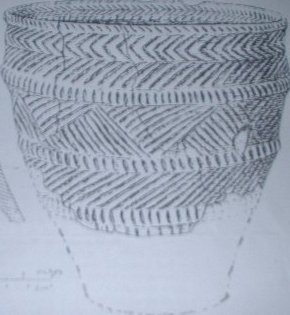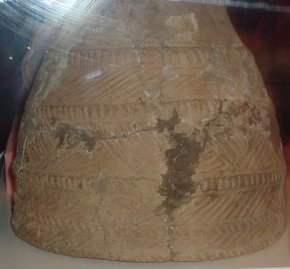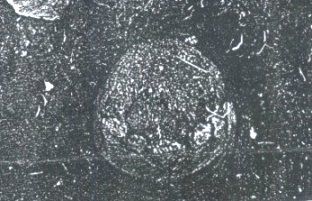| |
Local
History
|
Urn
at Carrickshawn, Ballyvelig. |
|

Viewing the urn are Nicholas
Murphy,Kilmokea.William Whelan,Ballyvelig and
Prof.R.A.S. Mac Alister of U.C.D.
|
A major find from the Bronze Age was made
in our parish in 1935. This was a Bronze Age urn and
from this we can learn how Campile man lived around
1500BC. An
urn was used to store the ashes of the dead person.
Burnt bones were also found here in the 1800's. The
bones were put in a cist grave which was a pit lined
with stones.
The urn found in Carrickshawn is a particular type known
as a food vessel. Food was placed in it for the journey
to the next world and so they believed in an after-life
over 4,000 years ago. The food vessel was made from
local clay and straw was sometimes added to strenghten
the clay. Designs were carved on the pottery. When dry
the pot was heated first in the sun and was then fired
at a temperature of about 600ºC. The fire was a large
open one of timber.
|

Drawing of urn at Ballyvelig
|
The above is a
completed drawing of the food vessel. It was found
when Mr.Whelan was repairing a ditch. Luckily, he
realised it was something of importance.It was
found with its mouth or opening faced downwards.No
cist grave was found nearby.Part of it was missing
and so it's presumed that it was damaged by
earlier fence workers.The vessel is 32cm in height
and 30cm in diameter.The design consists of
grooves of parallel lines and triangles.The design
is also found on the inside rim.
The food vessel can now been seen in the National
Museum in Dublin.
|

Ballyvelig Urn in
National Museum,Dublin
|
|

View of the spot where
the urn was found.
|
|
Please
return to Local History
|
|
|
|

